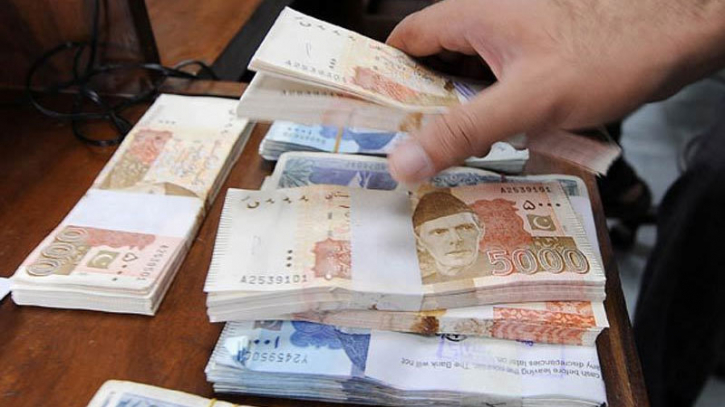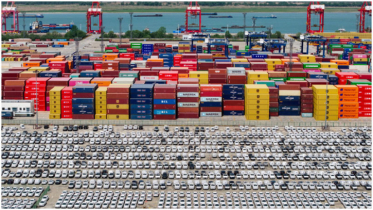Interest cost absorbs Pakistan's entire income

Pakistan Finance Minister Dr Shamshad Akhtar has identified the increasing cost of interest payments as a “primary concern” for fiscal stability of the country. During the first quarter of the current fiscal year (July-October), debt servicing consumed almost the entire net federal income of Rs1.4 trillion.
In her foreword to the Monthly Economic Outlook report for October by the finance ministry, Akhtar noted that economic activities have begun to pick up, and there has been a reduction in inflationary pressure. The ministry has projected a decrease in the inflation rate to 27% in October from previous month's 31.4% level.
She pointed out, “On the expenditure side, the primary concern is the rise in the cost of servicing public debt, with the rise in SBP policy rates to 22% and a weaker PKR fuelling the rise in servicing costs.” The debt servicing costs increased by 45% in the first quarter, totalling Rs1.4 trillion – nearly equivalent to net federal income after paying shares of the provinces.
The minister’s assessment came two days before the start of the first review talks by the International Monetary Fund (IMF), in which expected slippages against the budgetary expenditure on debt servicing will be one of the areas for discussions.
Pakistan is in an unsustainable debt situation where it has now borrowing to pay interest costs in addition to repaying the principal debt. The country needs debt restructuring – a path that successive governments are reluctant to take due to its political fallouts.
Akhtar stated that despite the increase in the debt servicing cost, the government managed to limit growth in expenditures through a prudent reduction in untargeted subsidies and a reduction in spending on new projects and schemes under the PSDP.
The government slashed public sector development spending by 30% to just Rs53 billion while the booked number of subsidies stood at just Rs2.5 billion.
“Higher markup payments will continue to pose significant challenges for fiscal consolidation efforts,” according to the report.
The cautious expenditure management is paying off in terms of restricted growth in non-markup spending. This helped in maintaining the primary balance in surplus, indicating better fiscal management, it added.
The report has been prepared by the economic advisor wing of the finance ministry, and the minister has for the first time added a forward to it, taking ownership of the report.
She stated that hard-earned gains on the fiscal and external accounts have started to translate into a pickup in economic activity. The Monthly Economic Indicator (MEI) for September 2023 posted the third consecutive month of positive gains in the index, reflecting growth momentum in high-frequency economic variables.
The MEI is expected to be positive throughout the outgoing fiscal year due to a rebound in domestic economic activities, according to the report.
In the last fiscal year, the country claimed a provisional growth rate of 0.3%, which is disputed by the World Bank and the IMF.
The report stated that the GDP growth outlook has improved with data showing positive momentum in manufacturing activity and an improved outlook for agricultural output.
The recent release of LSM data showed positive growth of 2.5% in August, reversing 14 months of a downward spiral in the manufacturing sector. The removal of restrictions on imports, clearance of outstanding letter of credits, and improved dollar liquidity in the markets following an increase in SBP FX reserves contributed to the pickup in economic activity, according to the report.
The recovery in the manufacturing sector is broad-based, with the export sector, construction activity, and consumer goods all posting gains in August. In the agricultural sector, cotton production is projected to rise 127% (estimated at 11.5 million bales) for 2023-24, compared to last year.
Rice production is also showing an impressive growth of 18% compared to last year. The increase in these main crops is encouraging for exports and the overall economic outlook in FY2024.
For Rabi crops 2023-24, the outlook is positive as the seed availability will remain satisfactory, and the supply of urea and DAP is expected to remain stable (Nov-Dec 2023). However, water availability is anticipated to be short by 15% for Punjab and Sindh during the season. Provinces have been allocated 31.66 MAF of water, but prevailing weather conditions are conducive, and the shortage is manageable.
Inflation
The Ministry of Finance stated that inflation will be better contained compared to the elevated levels observed in the first quarter of this fiscal year. The projection of inflation is hovering around 27% to 29% for October 2023, it added.
The 30 October MPS states that inflation will decline significantly in October, owing to downward adjustments in fuel prices, easing prices of some major food commodities, and a favourable base effect. The central bank reaffirmed its earlier assessment that inflation will decline substantially from the second half of this fiscal year, barring any major adverse developments.
The government has slashed petrol and diesel prices consecutively in two instances, capitalising on declining global crude rates and a stronger domestic currency.
In the first three months of the current year, the CAD has declined further by 58% to less than a billion dollars. The finance ministry said that the current account deficit is projected to stabilise around $6.5 billion or 1.5% of GDP in the current fiscal year as trade & investment flows normalise.
For the outlook, it is expected that exports of goods and services for October 2023 will remain around $3 billion and gradually take increasing momentum in the coming months as LSM shows some turning point.
.png)




